- Home
- Robert J. Sawyer
The Neanderthal Parallax, Book One - Hominids Page 13
The Neanderthal Parallax, Book One - Hominids Read online
Page 13
They continued talking for another three hours, slowly piecing together what had happened. And, once the full story had emerged, Reuben sank back into the couch, absolutely amazed.
Chapter Twenty
DAY THREE
SUNDAY, AUGUST 4
148/118/26
NEWS SEARCH
Keyword(s): Neanderthal
Word this morning from Sudbury, Canada, is that marriage proposals are outnumbering death threats two-to-one for the Neanderthal visitor. Twenty-eight women have sent letters or e-mails c/o this newspaper proposing to him, while Sudbury police and the RCMP have recorded only thirteen threats against his life ...
USA TODAY POLL:
•Percentage who believe the so-called Neanderthal is a fake: 54.
•Who believe he’s really a Neanderthal, but came from somewhere on this Earth: 26.
•Who believe he came from outer space: 11
•Who believe he came from a parallel world: 9.
Police today defused a bomb left at the entrance to the mineshaft elevator leading down to the cavern containing the Sudbury Neutrino Observatory, where the so-called Neanderthal first appeared ...
A religious sect in Baton Rouge, Louisiana, is hailing the arrival of the Neanderthal in Canada as the Second Coming of Christ. “Of [174] course he looks like an ancient human,” said the Rev. Hooley Gordwell. “The world is 6,000 years old, and Christ first came among us fully a third of that span ago. We’ve changed a bit, perhaps due to better nutrition, but he hasn’t.” The group is planning a pilgrimage to the mining town of Sudbury, Ontario, where the Neanderthal is currently living.
Early the next morning, after taking care not to be seen en route, Ponter and Dr. Montego rendezvoused with Mary in the lab at Laurentian. It was time to analyze Ponter’s DNA, to answer the big question.
Sequencing 379 nucleotides took meticulous work. Mary sat hunched over a milky white plastic desktop, the surface illuminated by fluorescent tubes beneath it. She’d placed the autorad film on the desktop and, with a felt-tip marker, wrote out the letters of the genetic alphabet for the string in question: G-G-C—one of the triplets that coded for the amino acid glycine; T-A-T, the code for tyrosine; A-T-A, which in mitochondrial DNA, as opposed to nuclear DNA, specified methionine; A-A-A, the recipe for lysine ...
At last she was done: all 379 bases from a specific part of Ponter’s control region were identified. Mary’s notebook computer had a little DNA-analysis program on it. She started by typing in the 379 letters she’d just written on the film, and then she asked Reuben to type them in again, just to make sure they’d been entered correctly.
The computer immediately reported three differences between what Mary had entered and what Reuben had, noting—it was an intelligent little program—a frameshift caused by Mary accidentally leaving off a T at one point; the other two errors were typos by Reuben. When she was [175] sure they had all 379 letters entered correctly, she had the program compare Ponter’s sequence to the one she’d extracted from the Neanderthal type specimen at the Rheinisches Landesmuseum.
“Well?” said Reuben. “What’s the verdict?”
Mary leaned back in her chair, astonished. “The DNA I took from Ponter,” she said, “differs in seven places from the DNA recovered from the Neanderthal fossil.” She raised a hand. “Now, some individual variation was to be expected, and naturally there’d be some genetic drift over time, but ...”
“Yes?” said Reuben.
Mary lifted her shoulders. “He’s a Neanderthal, all right.”
“Wow,” said Reuben, looking at Ponter as if seeing him for the first time. “Wow. A living Neanderthal.”
Ponter spoke a bit in his own language, and his implant interpreted: “My kind gone?” said the male voice.
“From here?” asked Mary. “Yes, your kind is gone from here—for at least 27,000 years.”
Ponter lowered his head, contemplating this.
Mary contemplated it, too. Until Ponter had shown up, the nearest living relatives Homo sapiens had were the two members of genus Pan: the chimpanzee and the bonobo. Both were equally closely related to humans, sharing about 98.5 percent of humanity’s DNA. Mary was nowhere near finished with her studies on Ponter’s DNA, but she guessed he shared as much as 99.5 percent with her kind of H. sapiens.
And that 0.5 percent accounted for all the differences. If he was a typical Neanderthal, his braincase probably was [176] larger than a normal man’s. And he was better muscled than just about any human Mary had ever met: his arms were as thick around as most men’s thighs. Plus, his eyes were an incredible golden brown; she wondered if there was any eye-color variation among his kind.
He was also quite hairy, although it seemed less so because of its light color. His forearms, and, she presumed, his back and chest, were well thatched. And he had a beard, and a full head of hair, parted in the center.
It hit her then: where she’d seen that sort of part before. Bonobos, those lithe apes sometimes called pygmy chimpanzees, all sported the same ’do. Fascinating. She wondered whether all his people had hair like that or if it was just a style he cultivated.
Ponter spoke again in his own language, his voice low, perhaps really just talking to himself, but the implant rendered the words in English anyway: “My kind gone.”
Mary made her tone as gentle as she could. “Yes. I’m sorry.”
More syllables spilled from Ponter’s lips, and his Companion said, “I ... no others. I ... all ...” He shook his head, and spoke again. The Companion switched to its female voice, speaking for itself. “I do not have the vocabulary to translate what Ponter is saying.”
Mary nodded slowly, sadly. “The word you’re looking for,” she said gently, “is ‘alone.’ ”
Adikor Huld’s dooslarm basadlarm was held in the Gray Council building, on the periphery of the Center. Males could get to it without crossing deep into female territory; [177] females could enter it without technically leaving their land. Adikor wasn’t sure what having the preliminary inquiry during Last Five would do for his chances, but the adjudicator, a woman named Komel Sard, looked to be from generation 142, and so would be long past menopause.
Adikor’s accuser, Daklar Bolbay, was now holding forth in the large square chamber. Fans blew air from the chamber’s north side to its south, and Adjudicator Sard sat at the south end, watching the action unfold with a neutral expression on her lined, wise face. The blowing air served a double purpose: it brought pheromones to her from the accused, which could often convey as much meaning as the words being spoken, and it kept her own pheromones—which might have betrayed which arguments were impressing her—from being detectable by the accuser or the accused, both of whom were positioned on the north side.
Adikor had met Klast many times, and had always gotten along well with her; her man-mate, after all, had been Ponter. But Bolbay, who had been Klast’s woman-mate, seemed to have none of Klast’s warmth or easy humor.
Bolbay was wearing a dark orange pant and a dark orange top; orange had always been the color of the accuser. For his part, Adikor wore blue, the color of the accused. Hundreds of spectators, equally split between male and female, sat on either side of the room; a dooslarm basadlarm for murder was clearly considered well worth seeing. Jasmel Ket was there, as was her young sister, Megameg Bek. Adikor’s own woman-mate, Lurt, was present as well; she’d given him a big hug when she’d arrived. Seated next to [178] Lurt was Adikor’s son Dab, the same age as little Megameg.
And, of course, almost all of Saldak’s Exhibitionists were present; there was no more interesting event going on right now than this hearing. Despite his current situation, Adikor was pleased to see Hawst in the flesh, having used his Voyeur to look in on so much of his life in the past. He also recognized Lulasm, who had been Ponter’s favorite, and Gawlt and Talok and Repeth and a couple of others. The Exhibitionists were easy to spot: they had to wear silver clothes, signaling to everyone around them that their implant broadcasts
were publicly accessible.
Adikor was sitting on a stool; there was plenty of room on all sides of it for Bolbay to circle him as she spoke, and she did so with great theatrical relish: “So tell us, Scholar Huld, did your experiment succeed? Did you successfully factor your target number?”
Adikor shook his head. “No.”
“So doing it beneath the surface did not help,” said Bolbay. “Whose idea was it to perform this factoring experiment far underground?” Her voice was low for a female’s, a deep rumbling sound.
“Ponter and I jointly agreed to it.”
“Yes, yes, but who initially suggested the idea? You, or Scholar Boddit?”
“I’m not sure.”
“It was you, wasn’t it?”
Adikor shrugged. “It might have been.”
Bolbay was now in front of him; Adikor refused to acknowledge her presence by shifting his gaze to her. “Now, Scholar Huld, tell us all why you chose this location.”
“I didn’t say I chose it. I said I might have.”
[179] “Fine. Tell us, then, why this location was selected for your work.”
Adikor frowned, thinking about how much detail was appropriate. “Earth,” he said at last, “is constantly bombarded by cosmic rays.”
“Which are?”
“Ionizing radiation coming from outer space. A stream of protons, helium nuclei, and other nuclei. When they collide with nuclei in our atmosphere, they produce secondary radiation—mostly pions, muons, electrons, and dutar rays.”
“And these are dangerous?”
“Not really—at least, not in the small quantities produced by cosmic rays. But they do interfere with delicate instruments, and so we wanted to set up our equipment somewhere that was shielded from them. And, well, the Debral nickel mine was nearby.”
“Couldn’t you have used another facility?”
“Conceivably, I suppose. But Debral is unique not only for its depth—it is the deepest mine in the world—but also for the low background radiation of its rocks. The uranium and other radioactives present in many other mines give off charged particles that would have impaired our instruments.”
“So you were well shielded down there?”
“Yes—from everything except neutrinos, I suppose.” Adikor caught the expression on Adjudicator Sard’s face. “Minuscule particles that stream right through solid matter; nothing can shield against them.”
“Now, weren’t you also shielded against something else down there?” asked Bolbay.
[180] “I don’t understand,” said Adikor
“A thousand armspans of rock between you and the surface. No radiation—not even cosmic-ray particles that had traveled unimpeded for huge distances—could get down to you.”
“Correct.”
“And no radiation could make it up from the surface to where you were working, isn’t that right?”
“How do you mean?”
“I mean,” said Bolbay, “that the signals from your Companions—yours, and Scholar Boddit’s—could not be transmitted out of there to the surface.”
“Yes, that’s true, although I hadn’t really given it any thought until an enforcer mentioned it to me yesterday.”
“Hadn’t given it much thought?” Bolbay’s tone was one of incredulity. “Since the day you were born, you’ve had a personal recording cube in the alibi-archive pavilion adjacent to this very Council building. And it has recorded everything you’ve done, every moment of your life, as transmitted by your Companion. Every moment of your life, that is, except the time you spent far, far below Earth’s surface.”
“I’m no expert on such matters,” said Adikor, somewhat disingenuously. “I really don’t know much about the transmission of data from a Companion.”
“Come now, Scholar Huld. A moment ago you were regaling us with stories of muons and pions, and now you expect us to believe you don’t understand simple radio broadcasting?”
“I didn’t say I don’t understand it,” said Adikor. “It’s [181] just that I’ve never thought about the issue that’s been raised.”
Bolbay was behind him again. “Never thought about the fact, that, while down there, for the first time since your birth, there would be no record available of what you were doing?”
“Look,” said Adikor, speaking directly to the adjudicator, before the orbiting Bolbay blocked his line of sight again. “I haven’t had cause to access my own alibi archive for countless months. Sure, the fact that my actions are normally being recorded is something I’m aware of, in an abstract sense, but I just don’t think about it every day.”
“And yet,” said Bolbay, “every day of your life, you enjoy the peace and safety made possible by that very recording.” She looked at the adjudicator. “You know that as you walk at night, the chances of you being the victim of robbery or murder or lasagklat are almost zero, because there’s no way to get away with such a crime. If you charged that—well, say, that I had attacked you in Peslar Square, and you could convince an adjudicator that your charge was reasonable, the adjudicator could order your alibi archive or mine unlocked for the time span in question, which would prove that I am innocent. But the fact that a crime cannot be committed without a record of it being made lets us all relax.”
Adikor said nothing.
“Except,” said Bolbay, “when someone contrives a situation to secrete himself and his victim in a place—practically the only place—in which no record of what happens between them could have been made.”
[182] “That’s preposterous,” said Adikor.
“Is it? The mine was dug long before the beginning of the Companion Era, and, of course, we’ve used robots to do the mining for ages now. It’s almost unheard of for a human to have to go down into that mine, which is why we’ve never addressed the problem of lack of communication between Companions there and the alibi-archive pavilion. But you set up a situation in which you and Scholar Boddit would be in this subterranean hideaway for great spans of time.”
“We didn’t even think about that.”
“No?” said Bolbay. “Do you recognize the name Kobast Gant?”
Adikor’s heart pounded, and his mouth went dry. “He’s an artificial-intelligence researcher.”
“Indeed he is. And he will state that seven months ago he upgraded both your Companion and Scholar Boddit’s, adding sophisticated artificial-intelligence components to them.”
“Yes,” said Adikor. “He did that.”
“Why?”
“Well, um ...”
“Why?”
“Because Ponter hadn’t liked being out of touch with the planetary information network. With our Companions cut off from the network down there, he thought it would be handy to have a lot more processing power localized in them, so that they could help us more with our work.”
“And you somehow forgot this?” said Bolbay.
“As you said,” replied Adikor, his tone sharp, “it was done months ago. I’d gotten quite used to having a [183] Companion that was more chatty than usual. After all, I’m sure Kobast Gant will also state that, although these were early versions of his companionable artificial-intelligence software, his intention was to make it available for all those who wanted it. He expected people to find it quite helpful, even if they are never cut off from the network—and he felt people would get used to it quickly, so that it would soon be as natural to them as having a dumber Companion.” Adikor folded his hands in his lap. “Well, I rapidly got used to mine, and, as I said at the outset, I didn’t give much thought to it, or to why it had originally been necessary ... but ... wait! Wait!”
“Yes?” said Bolbay.
Adikor looked directly at Adjudicator Sard, seated across the room. “My Companion could tell you what happened down there!”
The adjudicator leveled a steady stare at Adikor. “What is your contribution, Scholar Huld?” she asked.
“Me? I’m a physicist.”
“And a computer programmer, is that not so?�
� said the adjudicator. “Indeed, you and Scholar Boddit were working on complex computers.”
“Yes, but—”
“So,” said the adjudicator, “I hardly think we can trust anything your Companion might say. It would be a trivial enough matter for one of your expertise to program it to tell us whatever you wanted it to.”
“But I—”
“Thank you, Adjudicator Sard,” said Bolbay. “Now, tell us, Scholar Huld, how many people are normally involved in a scientific experiment?”
[184] “That’s a meaningless question,” said Adikor. “Some projects are undertaken by a single individual, and—”
“—and some are undertaken by tens of researchers, isn’t that true?”
“Sometimes, yes.”
“But your experiment involved just two researchers.”
“That’s not correct,” said Adikor. “Four other people worked on various stages of our project.”
“But none of them were invited down into the mine-shaft. Only the two of you—Ponter Boddit and Adikor Huld—went down there, isn’t that right?”
Adikor nodded.
“And only one of you returned to the surface.”
Adikor was impassive.
“Isn’t that right, Scholar Huld? Only one of you returned to the surface.”
“Yes,” he said, “but, as I’ve explained, Scholar Boddit disappeared.”
“Disappeared,” said Bolbay, as if she’d never heard the word before, as if she were struggling to comprehend its meaning. “You mean he vanished?”
“Yes.”
“Into thin air.”
“That’s right.”
“But there’s absolutely no record of this disappearance.”
Adikor shook his head slightly. Why was Bolbay pursuing him so? He’d never been unpleasant to her, and he couldn’t imagine that Ponter had ever presented him to Bolbay in unfavorable terms. What was motivating her?

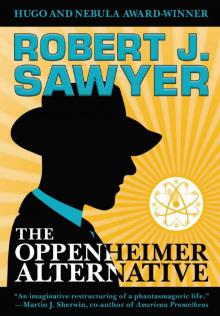 The Oppenheimer Alternative
The Oppenheimer Alternative Factoring Humanity
Factoring Humanity The Shoulders of Giants
The Shoulders of Giants Stream of Consciousness
Stream of Consciousness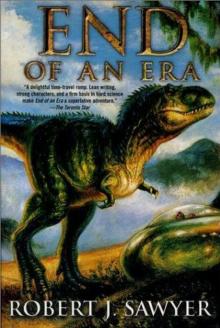 End of an Era
End of an Era The Terminal Experiment
The Terminal Experiment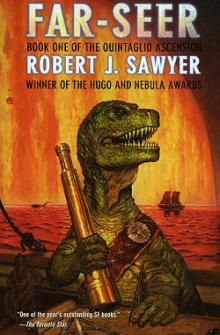 Far-Seer
Far-Seer Mindscan
Mindscan You See But You Do Not Observe
You See But You Do Not Observe Star Light, Star Bright
Star Light, Star Bright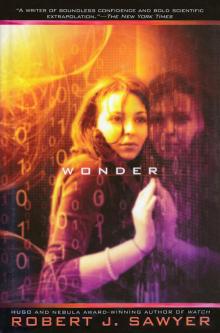 Wonder
Wonder Wiping Out
Wiping Out Flashforward
Flashforward Above It All
Above It All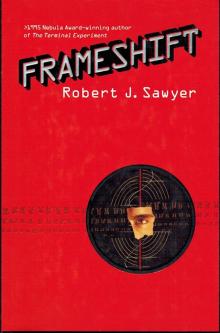 Frameshift
Frameshift The Neanderthal Parallax, Book One - Hominids
The Neanderthal Parallax, Book One - Hominids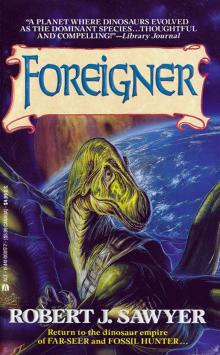 Foreigner
Foreigner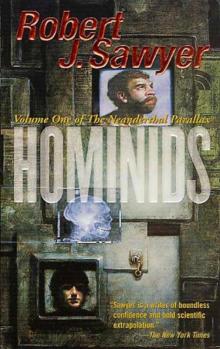 Neanderthal Parallax 1 - Hominids
Neanderthal Parallax 1 - Hominids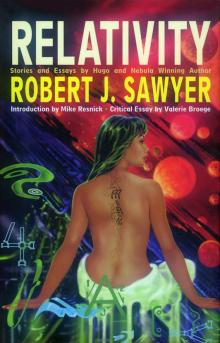 Relativity
Relativity Identity Theft
Identity Theft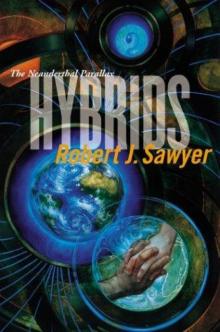 Hybrids np-3
Hybrids np-3 Foreigner qa-3
Foreigner qa-3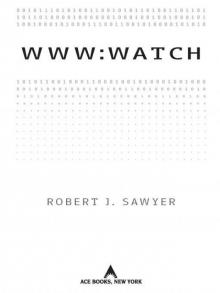 WWW: Watch
WWW: Watch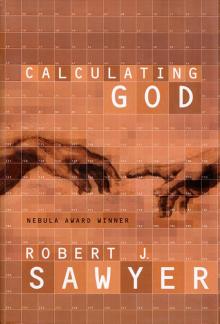 Calculating God
Calculating God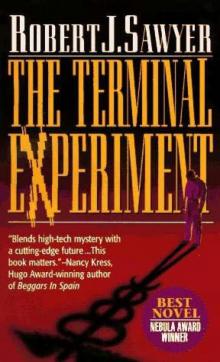 The Terminal Experiment (v5)
The Terminal Experiment (v5) Peking Man
Peking Man The Hand You're Dealt
The Hand You're Dealt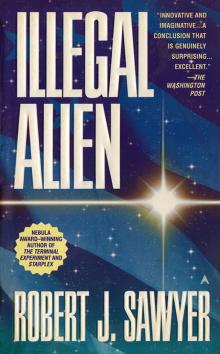 Illegal Alien
Illegal Alien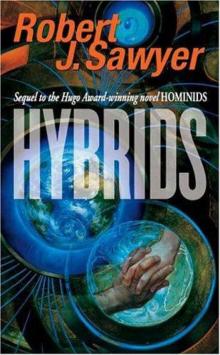 Neanderthal Parallax 3 - Hybrids
Neanderthal Parallax 3 - Hybrids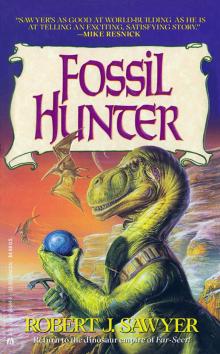 Fossil Hunter
Fossil Hunter WWW: Wonder
WWW: Wonder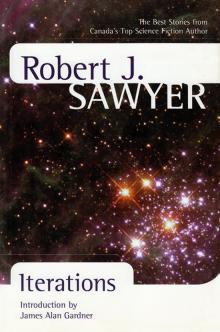 Iterations
Iterations Red Planet Blues
Red Planet Blues Rollback
Rollback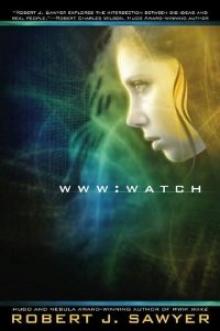 Watch w-2
Watch w-2 Gator
Gator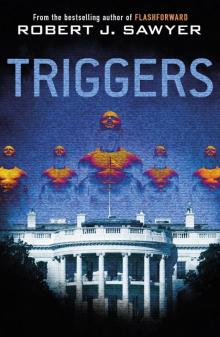 Triggers
Triggers Neanderthal Parallax 2 - Humans
Neanderthal Parallax 2 - Humans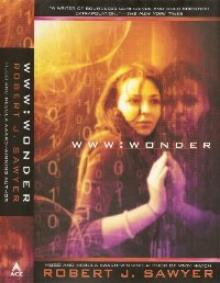 Wonder w-3
Wonder w-3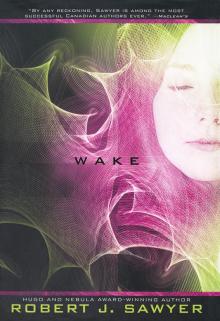 Wake
Wake Just Like Old Times
Just Like Old Times Wake w-1
Wake w-1 Fallen Angel
Fallen Angel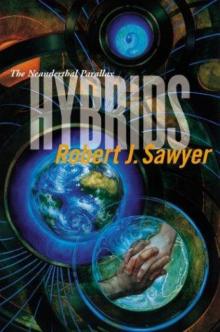 Hybrids
Hybrids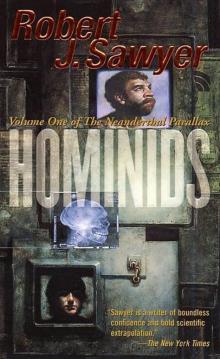 Hominids tnp-1
Hominids tnp-1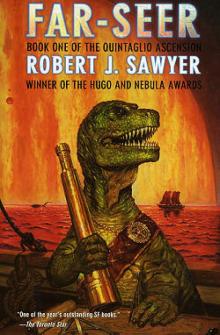 Far-Seer qa-1
Far-Seer qa-1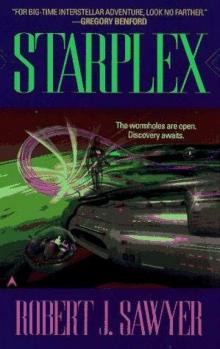 Starplex
Starplex Hominids
Hominids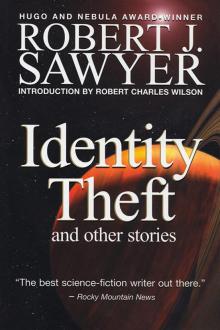 Identity Theft and Other Stories
Identity Theft and Other Stories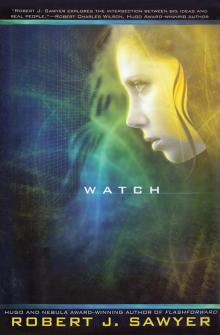 Watch
Watch Golden Fleece
Golden Fleece Quantum Night
Quantum Night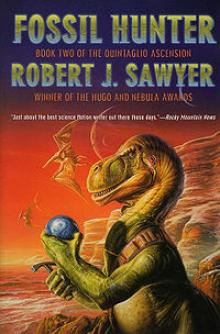 Fossil Hunter qa-2
Fossil Hunter qa-2 Humans np-2
Humans np-2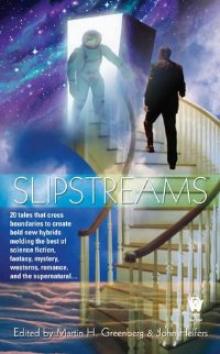 Biding Time
Biding Time